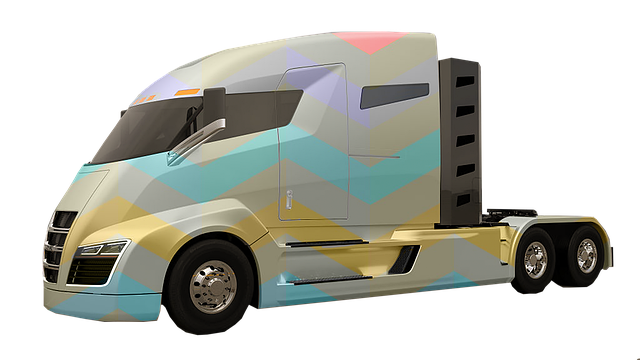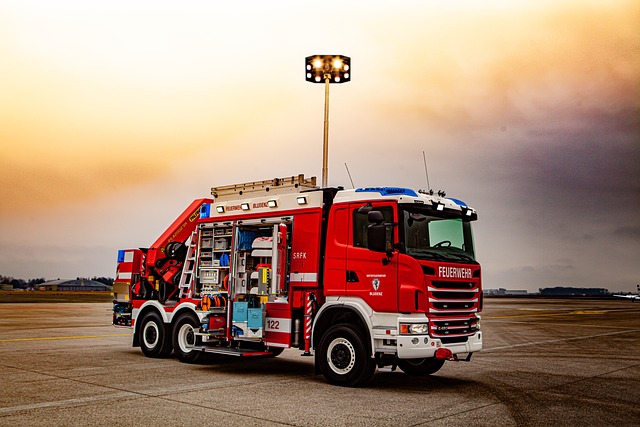Heavy-duty trucks require specialized custom heavy-duty truck policies due to unique risks not covered by standard insurance. These policies factor in vehicle type, usage, driver experience, and safety features for tailored protection. Fleet owners should evaluate coverage scope, deductibles, and services to secure competitive rates and comprehensive protection. By implementing targeted safety measures, regular maintenance, and strong driver training, businesses can negotiate lower premiums while mitigating risks and fostering positive insurer relationships.
In the competitive landscape of heavy-duty trucking, managing insurance costs is a critical aspect for fleet operators. Understanding and negotiating custom heavy-duty truck policy premiums can significantly impact your bottom line. This article delves into the factors shaping these rates, offering insights on how to secure lower costs for your commercial fleet. From evaluating risk to leveraging case studies of successful negotiations, discover strategies to navigate the market effectively and optimize your insurance spend.
- Understanding Competitive Heavy-Duty Truck Insurance Rates
- Factors Influencing Custom Heavy-Duty Truck Policy Premiums
- Strategies to Secure Lower Rates for Your Commercial Fleet
- Case Studies: Successful Negotiations and Savings in Heavy-Duty Truck Insurance
Understanding Competitive Heavy-Duty Truck Insurance Rates

Heavy-duty trucks, due to their size and operational nature, often come with unique risks that standard insurance policies might not adequately cover. This is where understanding competitive heavy-duty truck insurance rates becomes crucial. Insurers specialize in crafting custom heavy-duty truck policies tailored to address these specific concerns. These policies take into account factors such as vehicle type, usage (local hauling versus long-distance), driver experience, and safety features.
Competitive rates are achieved by comparing quotes from multiple insurers who specialize in this sector. This involves evaluating the scope of coverage offered, deductibles, and any additional services or perks. By understanding these intricacies, fleet owners can make informed decisions to secure not just competitive rates but also comprehensive protection for their valuable heavy-duty trucks.
Factors Influencing Custom Heavy-Duty Truck Policy Premiums

Heavy-duty trucks, with their size and specialized nature, come with unique insurance considerations. Several factors play a significant role in determining custom heavy-duty truck policy premiums. One of the primary influences is the vehicle’s purpose; whether it’s used for local hauling, long-haul transportation, or construction tasks, each operation presents distinct risk profiles. Additionally, the age and condition of the truck are crucial—older vehicles may command higher rates due to increased maintenance needs and potential reliability concerns.
Driver experience and safety records also impact premium costs. Drivers with clean driving histories and advanced training often enjoy lower rates as they represent lower risks. The type and value of cargo transported add another layer of complexity; certain commodities or high-value loads may require specialized coverage, increasing the policy’s cost. Furthermore, location plays a part; regional differences in insurance pricing reflect varying risk levels and regulatory environments.
Strategies to Secure Lower Rates for Your Commercial Fleet

Securing lower rates on heavy-duty truck insurance doesn’t have to be a challenging task. One effective strategy is to develop a custom heavy-duty truck policy tailored to your specific fleet needs. This involves assessing each vehicle’s unique risks and implementing targeted safety measures. For instance, prioritizing regular maintenance can significantly reduce the likelihood of breakdowns and accidents. Additionally, equipping trucks with advanced technology like telematics can provide real-time monitoring, helping insurers assess risk more accurately and potentially offering discounts.
Another key approach is to foster a culture of safety within your organization. This includes comprehensive driver training programs that focus on defensive driving techniques, load securement, and fatigue management. By demonstrating a strong commitment to safety through these measures, you can negotiate better rates with insurance providers who recognize the value of risk mitigation. Regularly reviewing and updating your fleet’s policies and procedures is also essential to staying competitive in the insurance market.
Case Studies: Successful Negotiations and Savings in Heavy-Duty Truck Insurance

In the competitive landscape of heavy-duty truck insurance, successful negotiations can lead to significant savings for businesses. Case studies show that companies who invest time and effort into understanding their specific needs and crafting a custom heavy-duty truck policy are often rewarded with lower rates. By evaluating factors like vehicle type, driving history, safety features, and operational practices, insurers can offer tailored coverage that goes beyond standard packages.
These negotiations don’t just save money; they also enhance the relationship between carriers and clients. Businesses that actively participate in shaping their insurance policies gain a deeper understanding of risk management, enabling them to make informed decisions that contribute to both financial stability and operational efficiency. This proactive approach ensures that heavy-duty truck operators are not only protected but also empowered to navigate the road ahead with confidence.
Competitive heavy-duty truck insurance rates are achievable through a thorough understanding of influencing factors and strategic negotiations. By grasping how your fleet’s unique characteristics, operational risks, and historical claims impact premiums, you can make informed decisions to lower costs. Implementing the discussed strategies, such as risk management initiatives, safe driving programs, and leveraging technology, has proven successful in securing substantial savings for commercial fleets. Embracing these approaches not only benefits your bottom line but also contributes to enhancing safety and operational efficiency across your heavy-duty truck operations.
